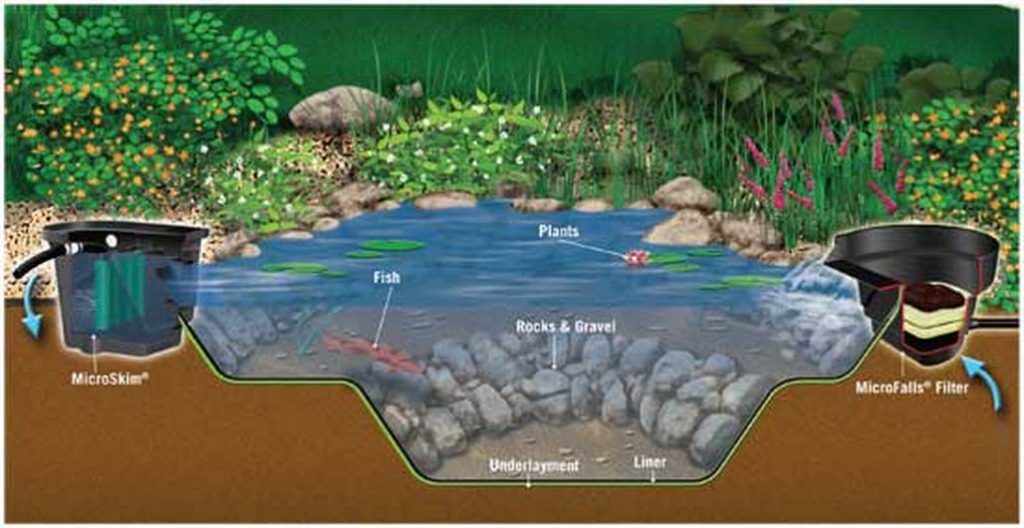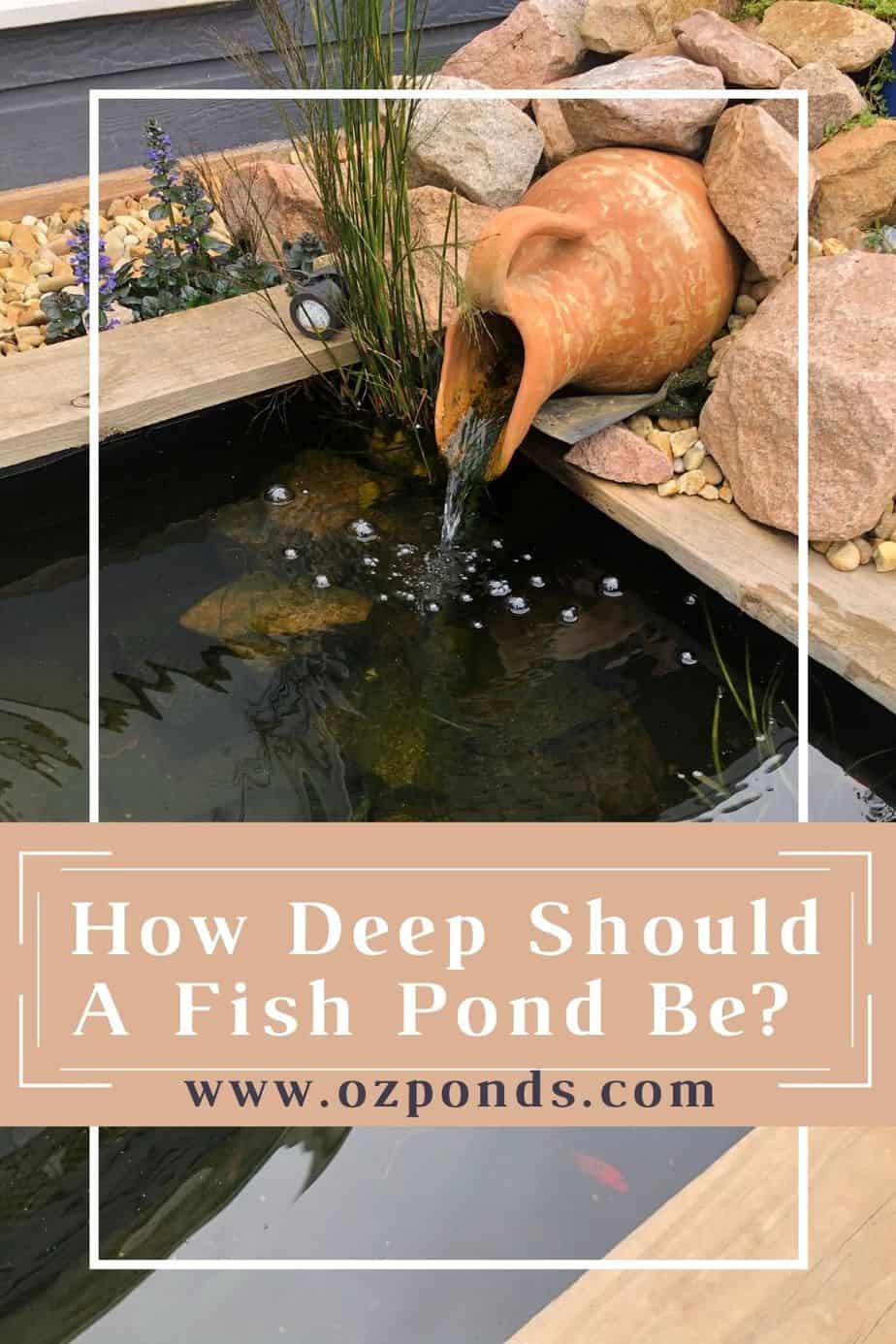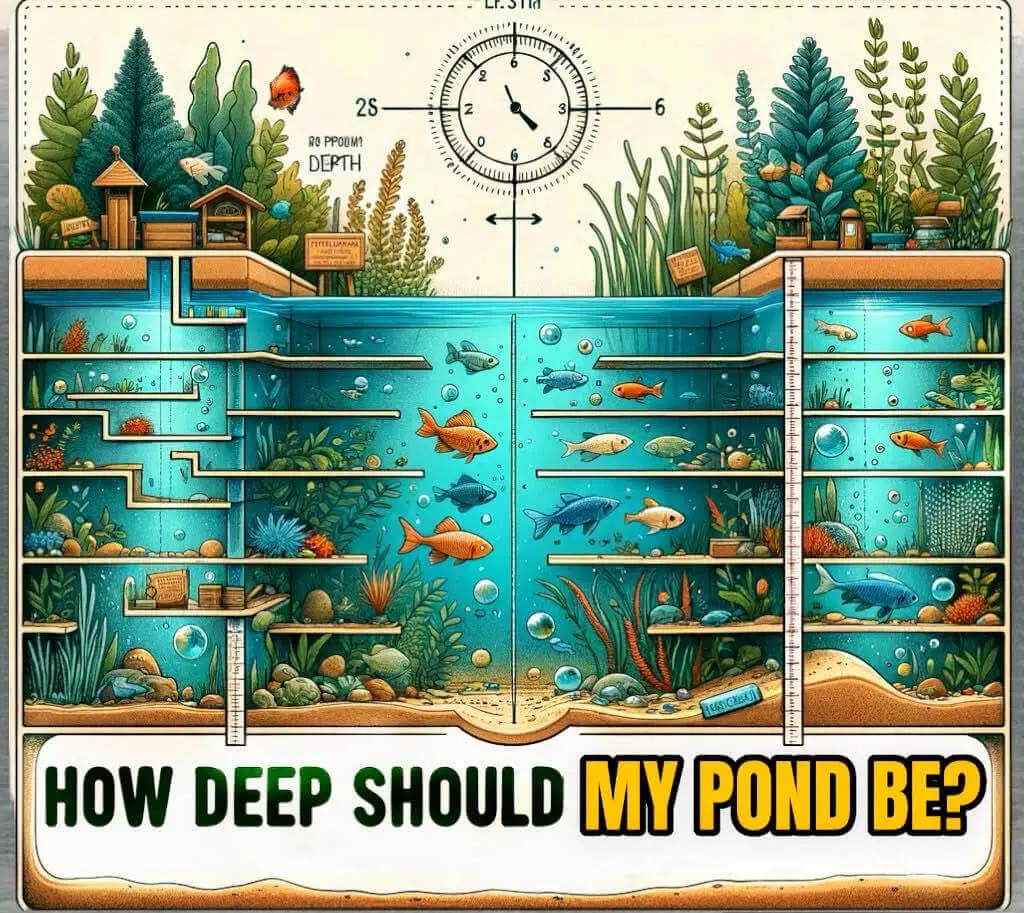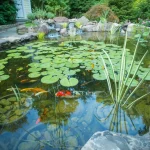Are you considering building a pond on your property and wondering how deep it needs to be for fish to thrive? Creating a suitable environment for fish in a pond involves various factors, with depth being a crucial one. Let’s explore the ideal pond depth for fish and why it matters.
Why Pond Depth is Important for Fish
The depth of a pond plays a significant role in providing a suitable habitat for fish to live and thrive. It affects water temperature, oxygen levels, and the overall ecosystem within the pond. Different fish species have varying depth preferences based on their natural habitat and behavior.

Credit: atlantiswatergardens.com
Factors Influencing Ideal Pond Depth for Fish
When determining the depth of a pond for fish, several factors need to be considered:
- 1. Fish Species: Different fish species have different depth preferences. Some species prefer shallow water, while others thrive in deeper areas.
- 2. Climate: The climate of your region influences water temperature, which in turn affects fish behavior and habitat preferences.
- 3. Oxygen Levels: Deeper water tends to hold more oxygen, which is essential for fish survival, especially in warmer months.
- 4. Predators: Pond depth can offer protection for fish from predators, as deeper water can be a deterrent for some species.
Recommended Pond Depths for Fish
The ideal depth of a pond for fish can vary depending on the species you wish to keep. Here are some general guidelines for pond depths based on common fish species:
| Fish Species | Ideal Pond Depth |
|---|---|
| Koi | 3 to 4 feet |
| Goldfish | 2 to 3 feet |
| Bass | 8 to 12 feet |
| Trout | 6 to 8 feet |
Benefits of Adequate Pond Depth for Fish
Ensuring that your pond has the right depth for the fish species you want to keep comes with several benefits:
- 1. Healthier Fish: Proper depth provides fish with the space and conditions they need to stay healthy and thrive.
- 2. Natural Behavior: Fish can exhibit their natural behaviors, such as breeding and foraging, in an environment with suitable depth.
- 3. Water Quality: Deeper water can help maintain stable water quality by regulating temperature and oxygen levels.
- 4. Predator Protection: Fish can seek refuge in deeper areas to avoid predators, contributing to their safety.

Credit: ozponds.com
Tips for Maintaining the Right Pond Depth
Once you have determined the ideal depth for your pond, it’s essential to maintain that depth over time. Here are some tips to help you achieve and preserve the right pond depth:
- 1. Regular Monitoring: Keep an eye on water levels to ensure they remain within the desired range for your fish species.
- 2. Rainfall Management: Plan for potential changes in water depth due to heavy rainfall or drought conditions.
- 3. Water Circulation: Implement aeration systems or water pumps to maintain oxygen levels, especially in deeper areas.
- 4. Depth Markers: Install markers or measure depth periodically to track any changes and take necessary actions.
Conclusion
Creating the right pond depth for fish is essential for providing a suitable habitat that promotes their health and well-being. By considering factors such as fish species, climate, and oxygen levels, you can establish an environment that supports a thriving fish population. Remember to monitor and maintain the pond depth to ensure a sustainable ecosystem for your aquatic friends.





